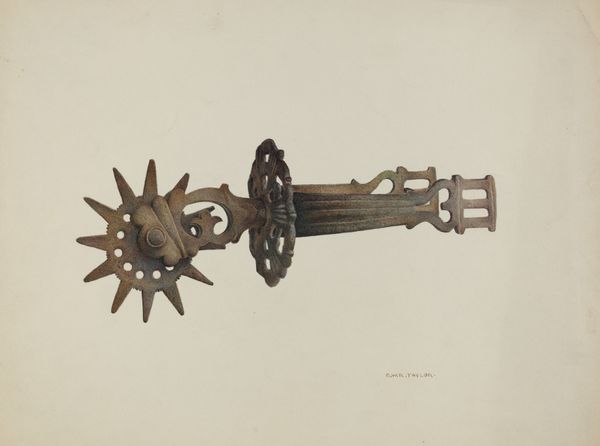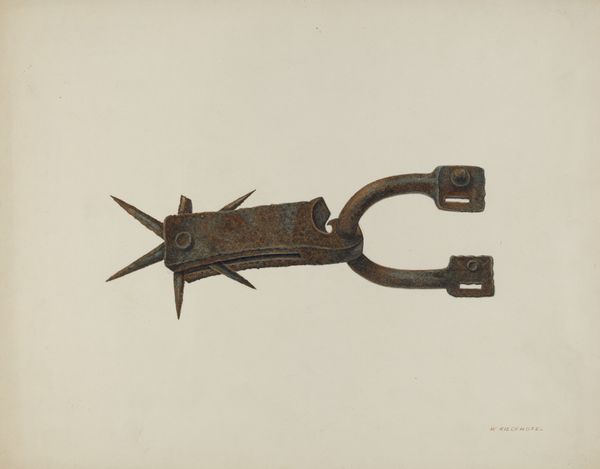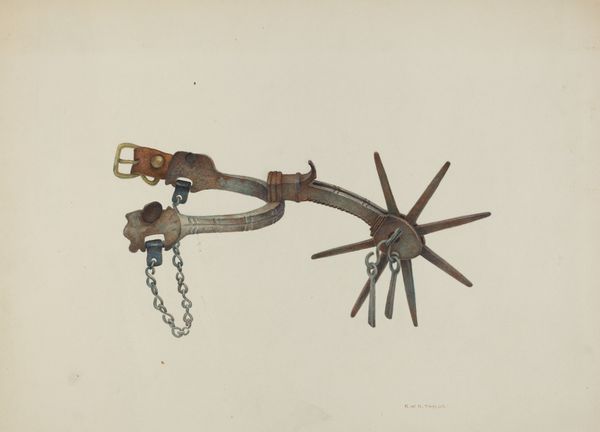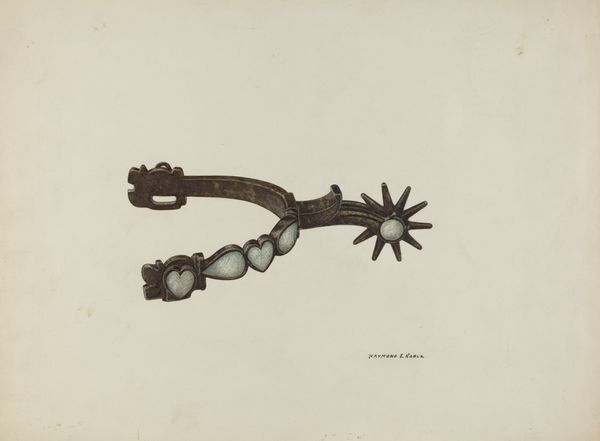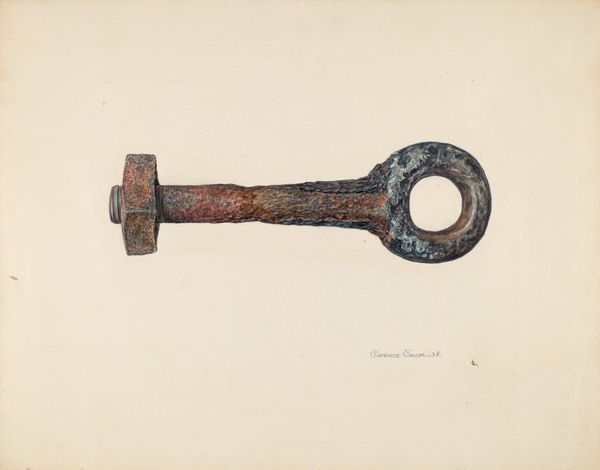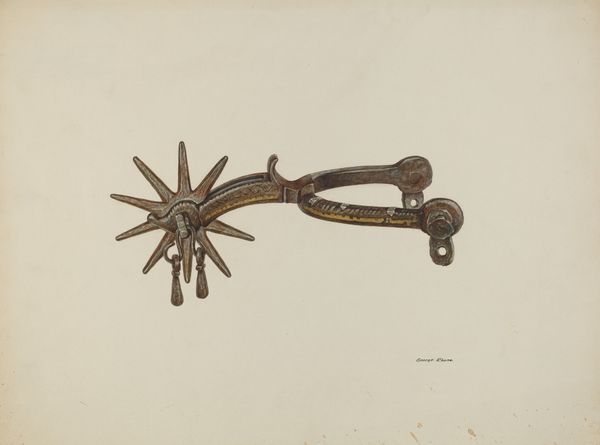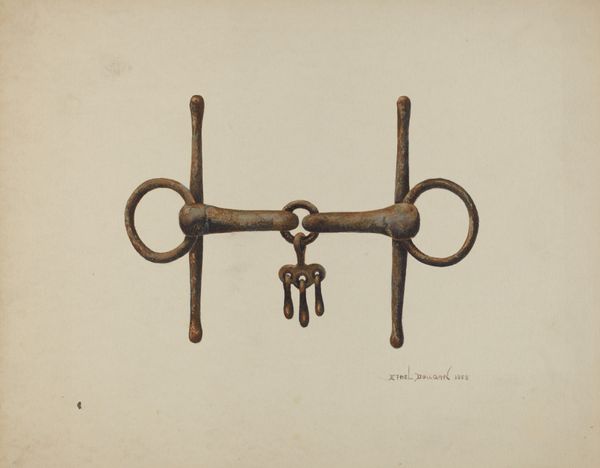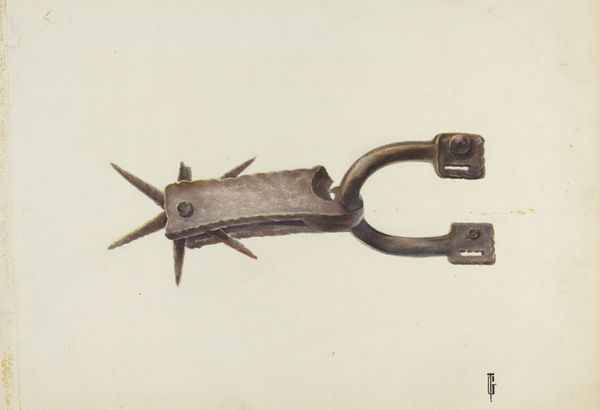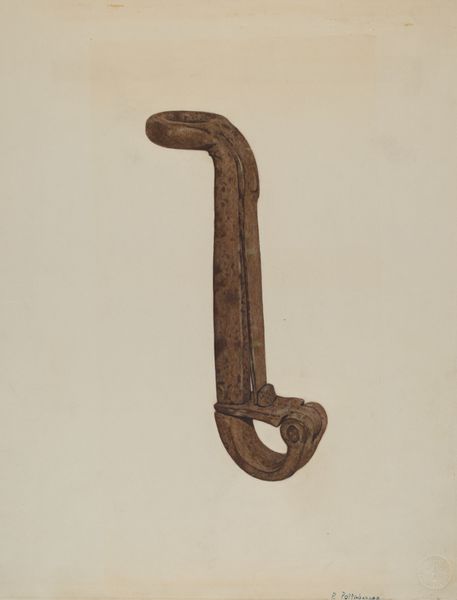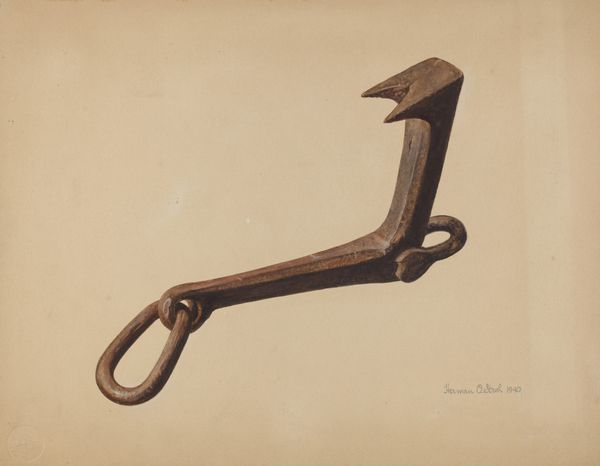
drawing, coloured-pencil, pencil
#
pencil drawn
#
drawing
#
coloured-pencil
#
pencil drawing
#
geometric
#
pencil
#
watercolor
#
realism
Dimensions: overall: 26.7 x 35.6 cm (10 1/2 x 14 in.)
Copyright: National Gallery of Art: CC0 1.0
Editor: Here we have Cornelius Christoffels’ "Spur," from around 1940. It's rendered meticulously in colored pencil. It’s incredibly detailed. How do you interpret this work? Curator: Let's consider the social life of this object. We see a working spur, realistically rendered through the colored pencil. Notice how the artist emphasizes the wear and tear – the rust, the patina – evidence of its use in the labour of ranching, which contrasts sharply with the rose-like adornments that are both part of its construction and also serve a symbolic purpose of adding beauty. Where do you think those details come from? Editor: Well, the artist seems really interested in capturing its form exactly, even down to the imperfections in the metal. Is that a type of realism? Curator: Perhaps. But more interestingly, how does focusing on the real conditions of laboring life play against the more "artificial" and "crafted" elements such as the roses that denote something other than hard labor. Think of the spur's relationship to the horse and rider, power dynamics. It speaks volumes about the cowboy culture prevalent in the West during this period. Editor: That makes me wonder about the original maker, as well as Christoffels as the artist. Are they glorifying this object? Is there critique here? Curator: Exactly! By elevating the mundane and exploring the nuances of production and class, the artist invites us to question the traditional hierarchies. What's more valued – high art or everyday craft, raw labor or refined aesthetics? Editor: I see that so clearly now! Examining it through the lens of labor and materials unlocks a completely new way to consider the artist’s choice and context. Curator: And perhaps question art’s purpose as glorification, or documentation. We should instead think about the politics of representation.
Comments
No comments
Be the first to comment and join the conversation on the ultimate creative platform.
